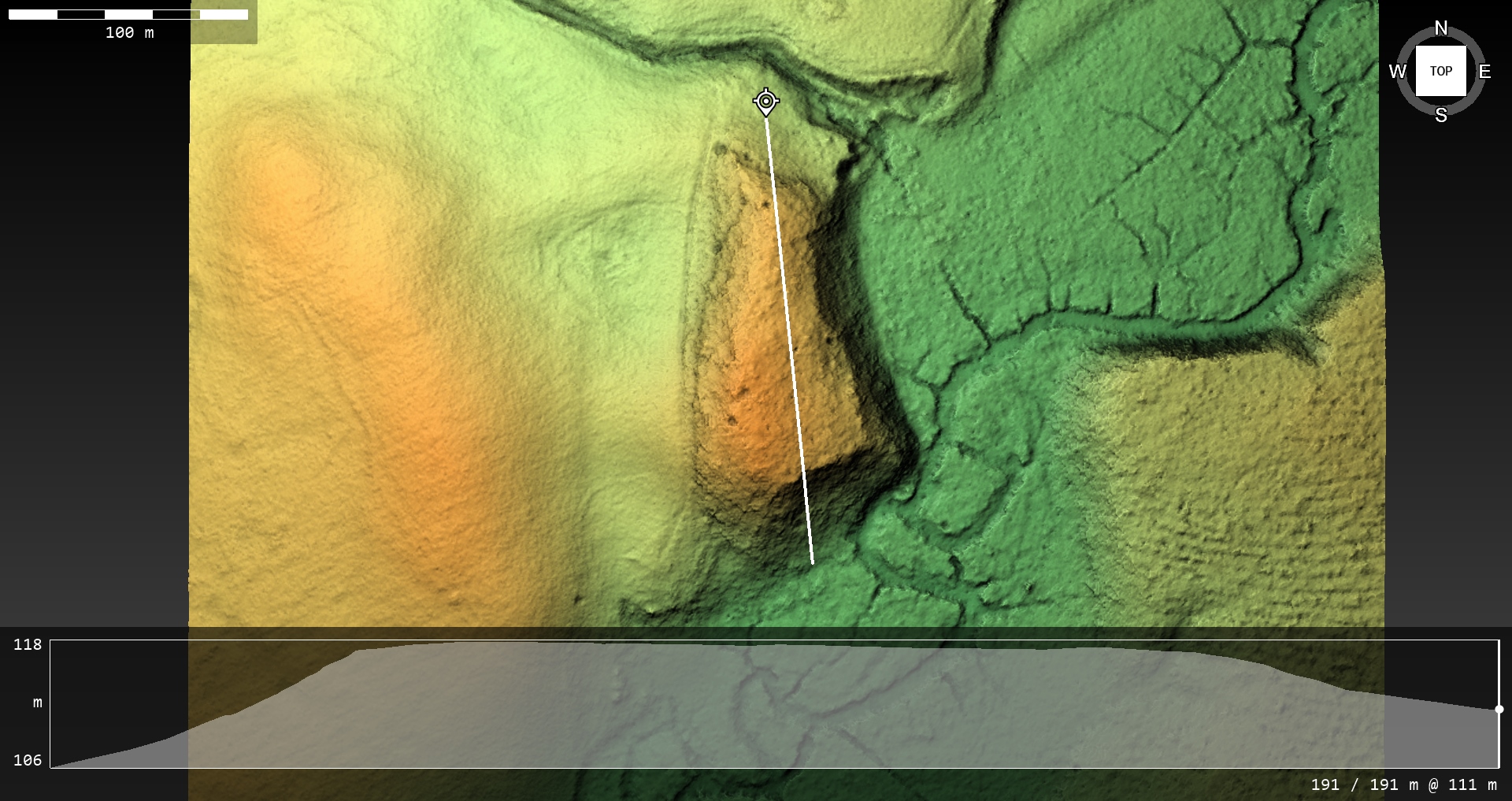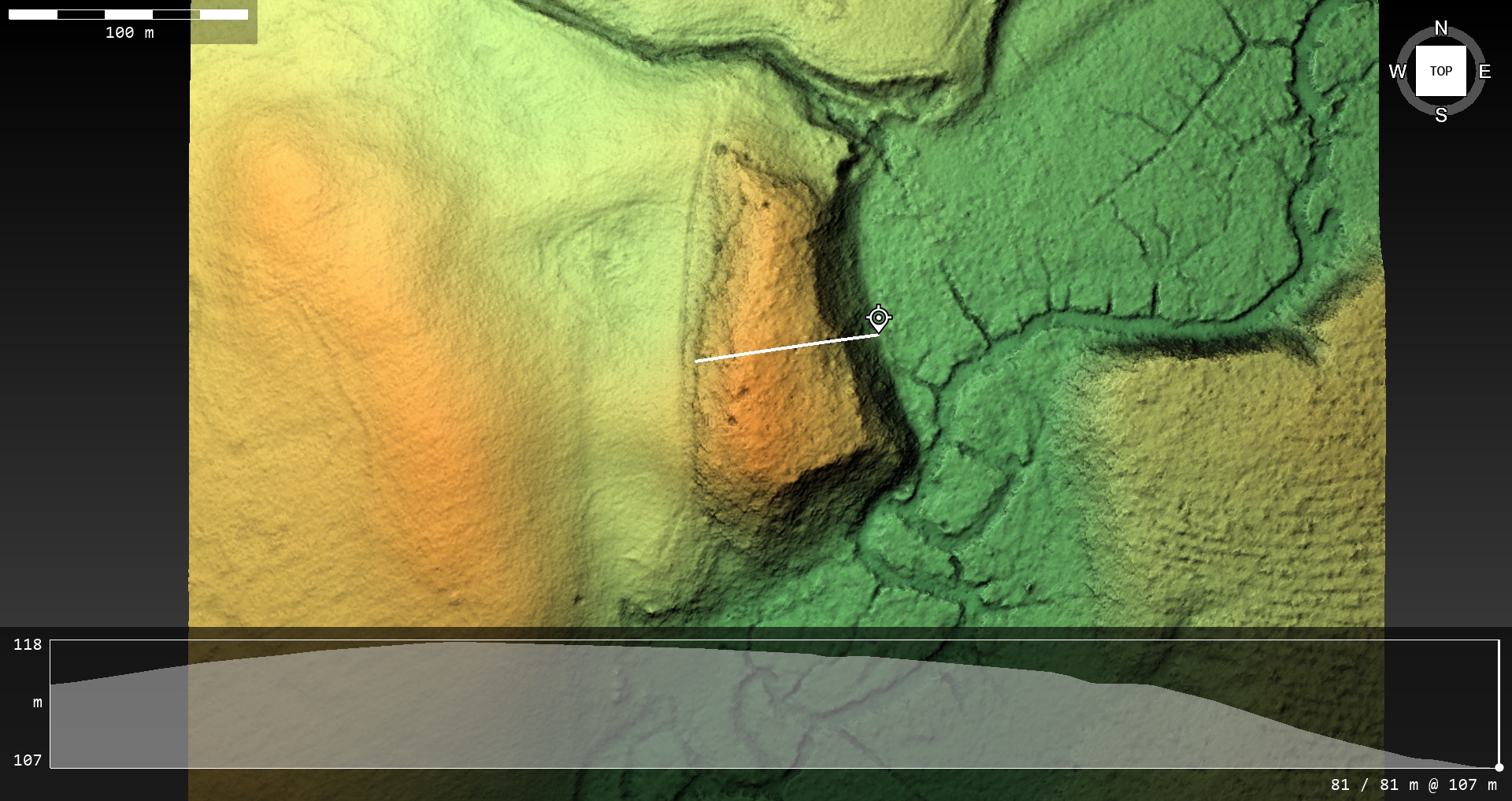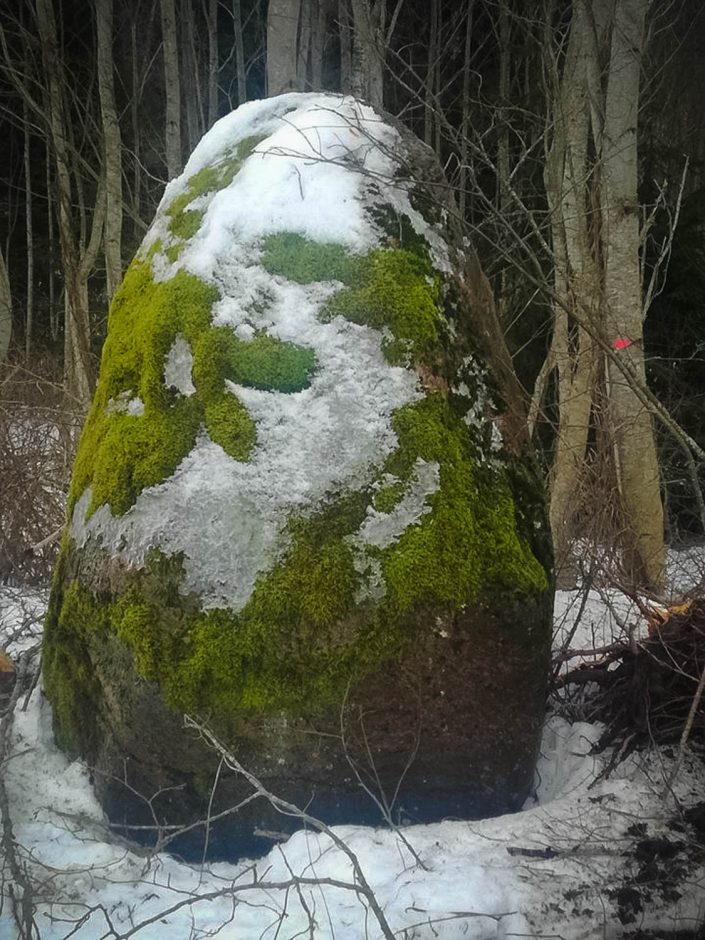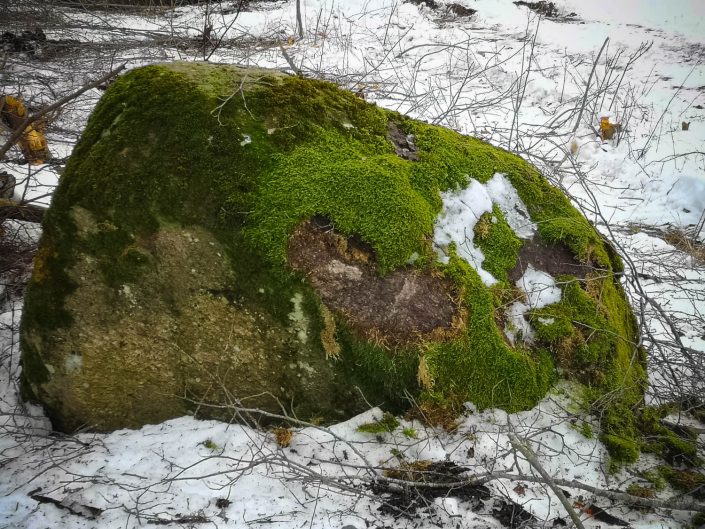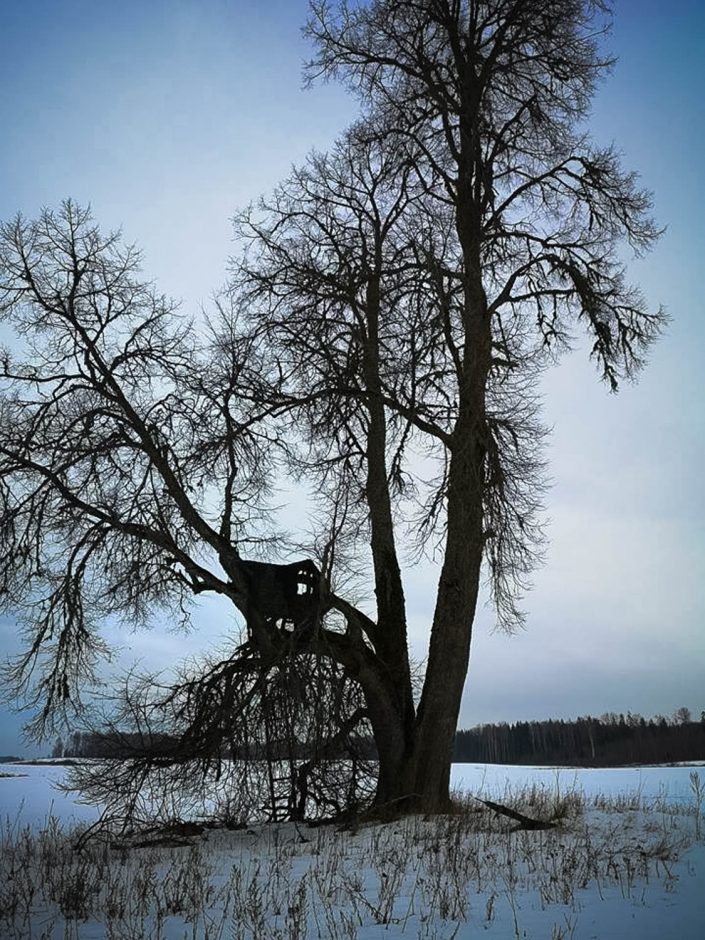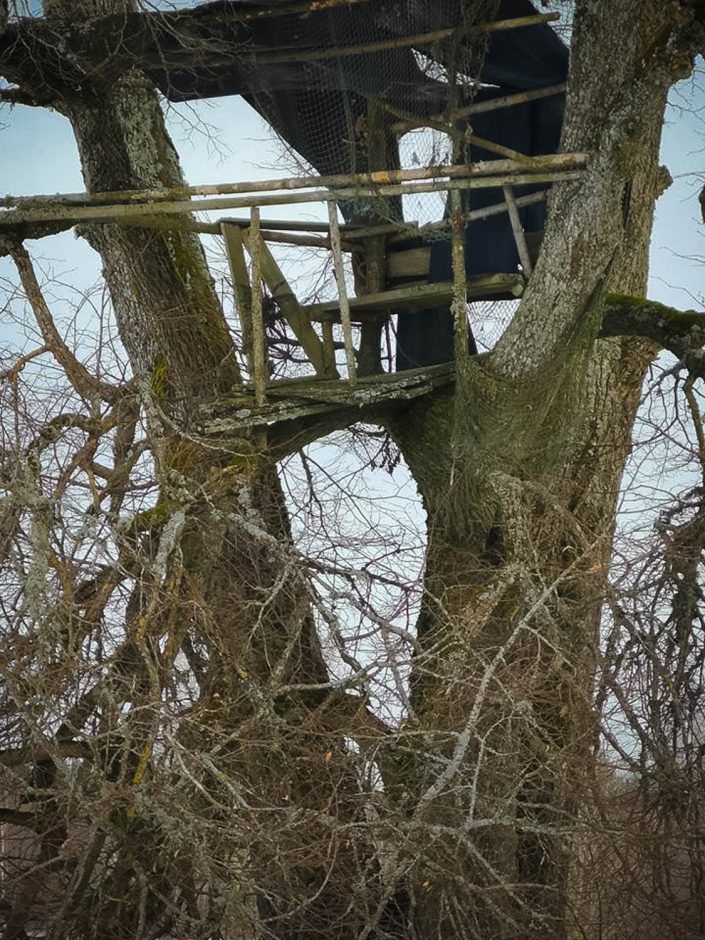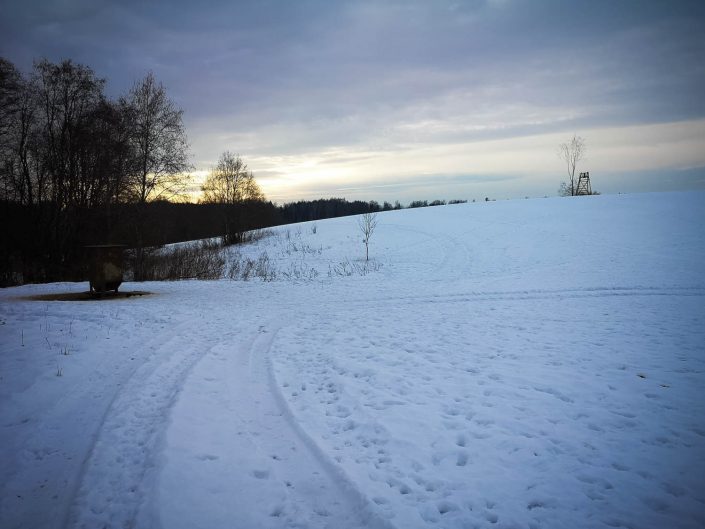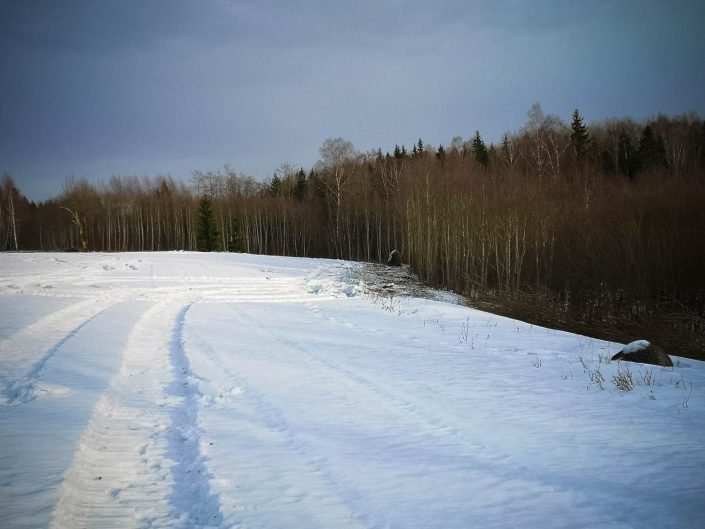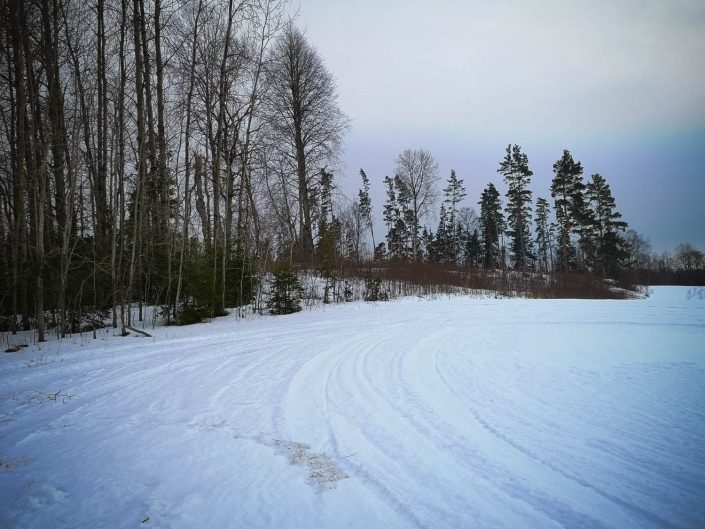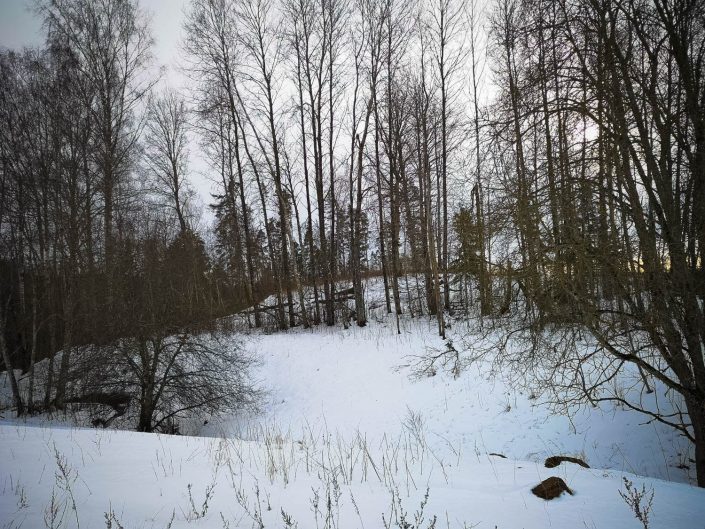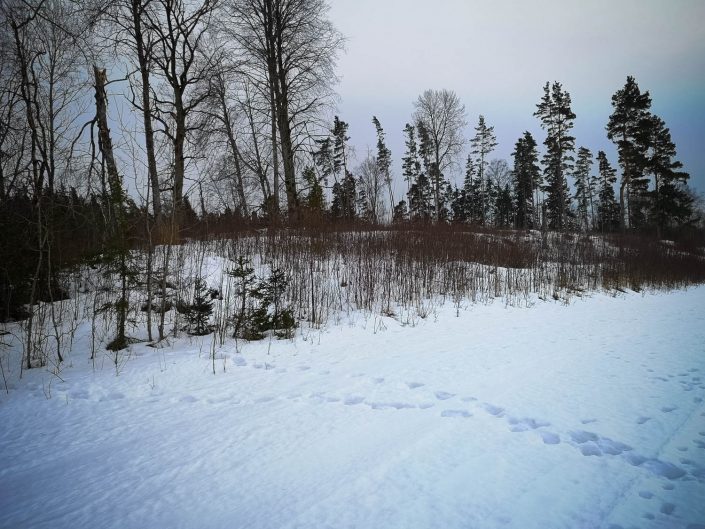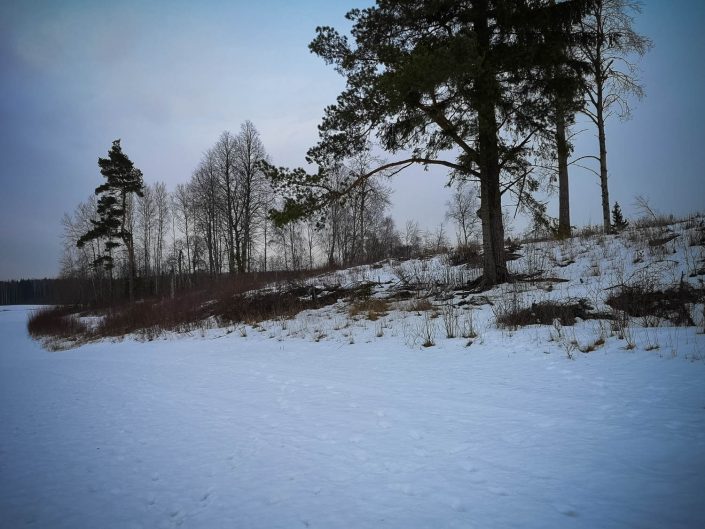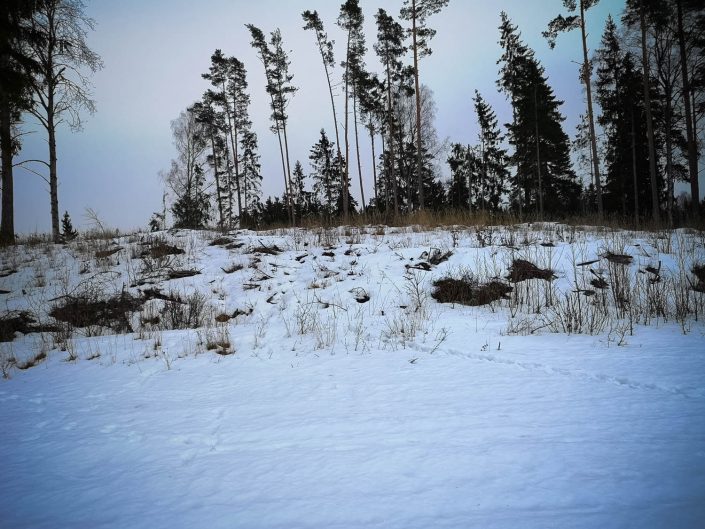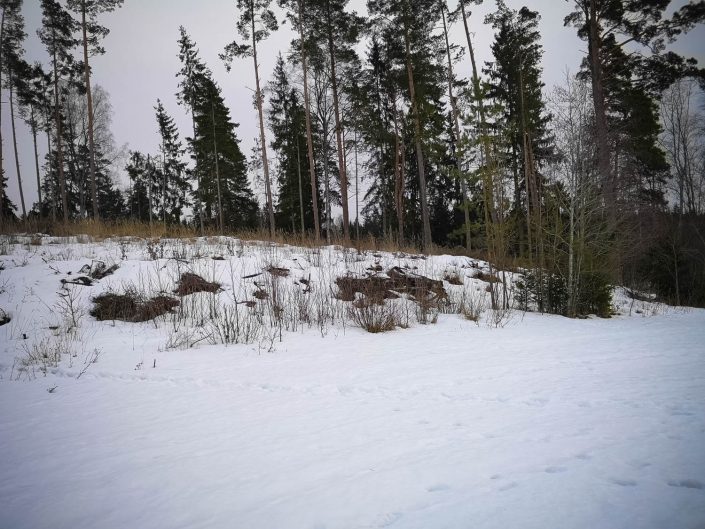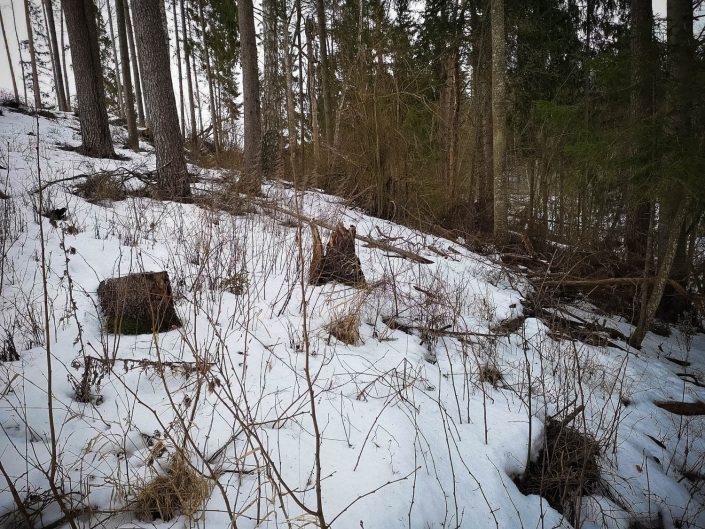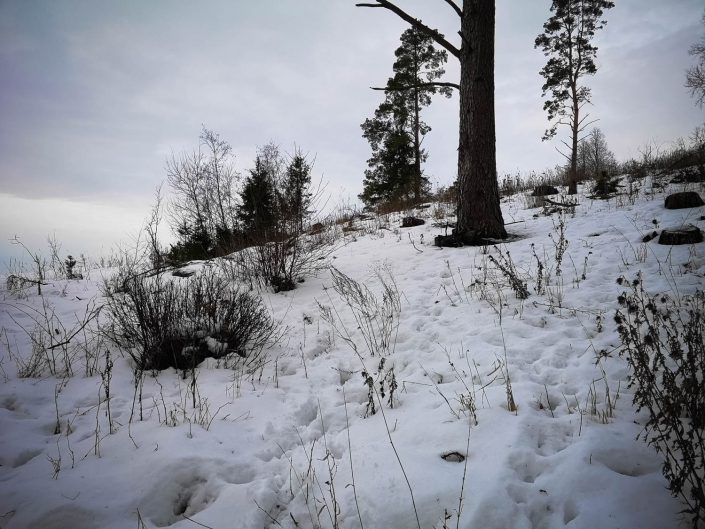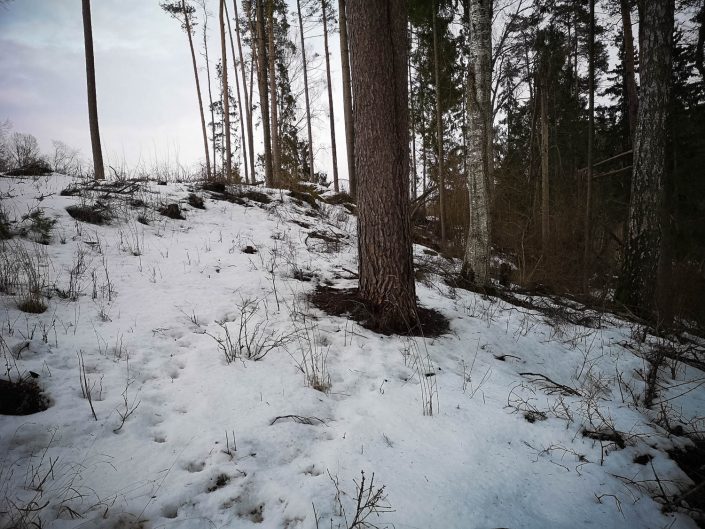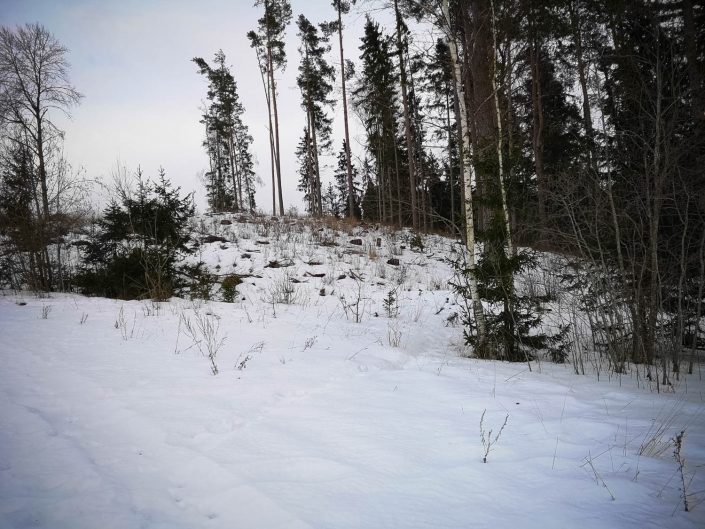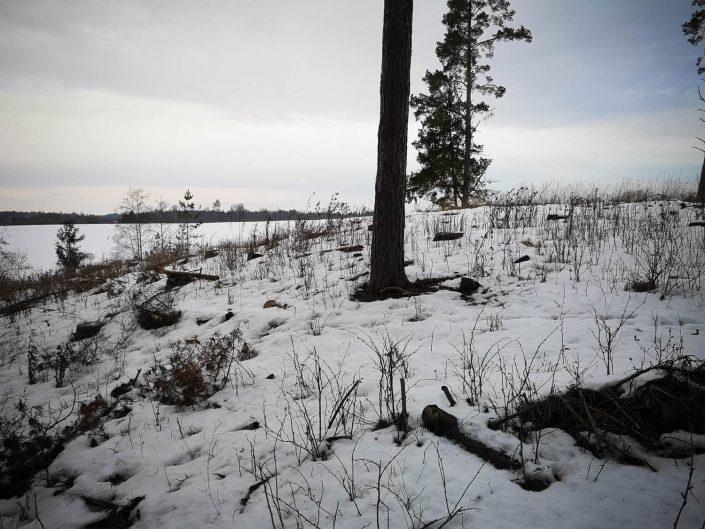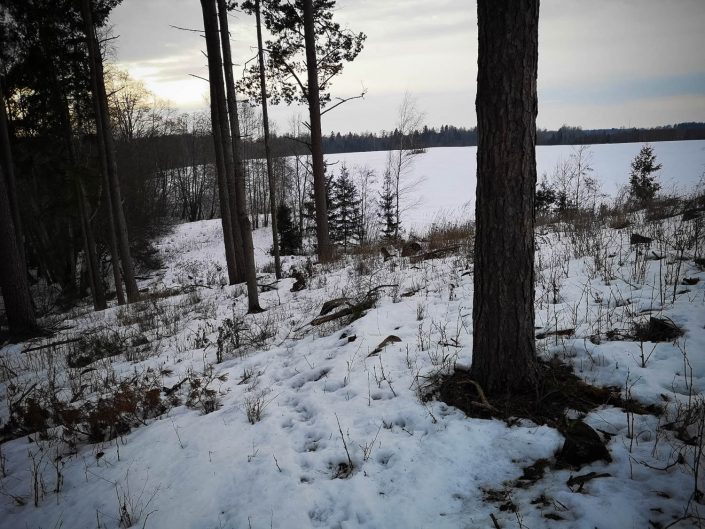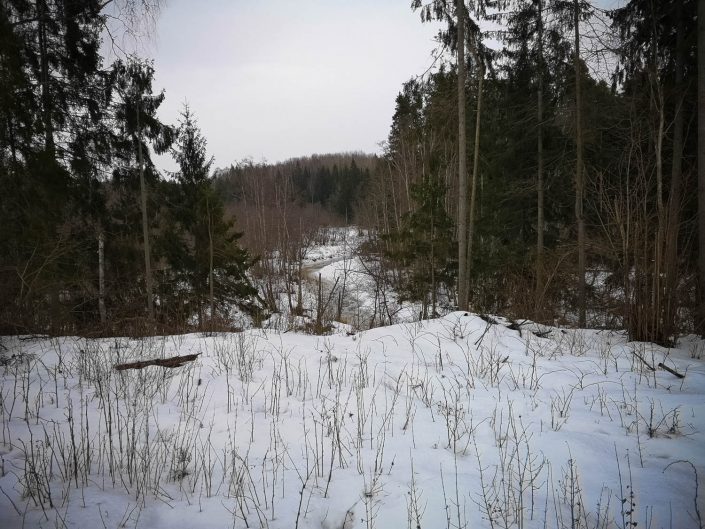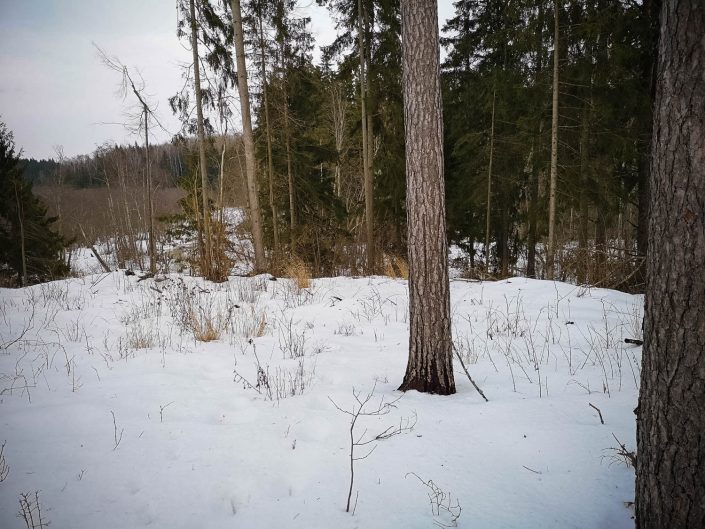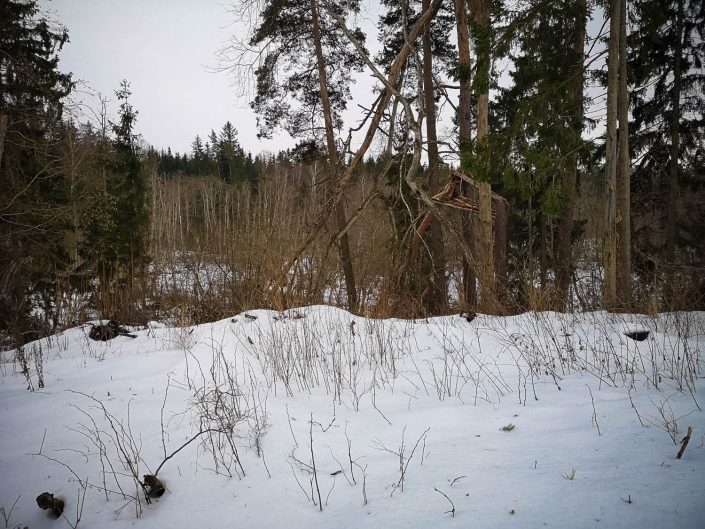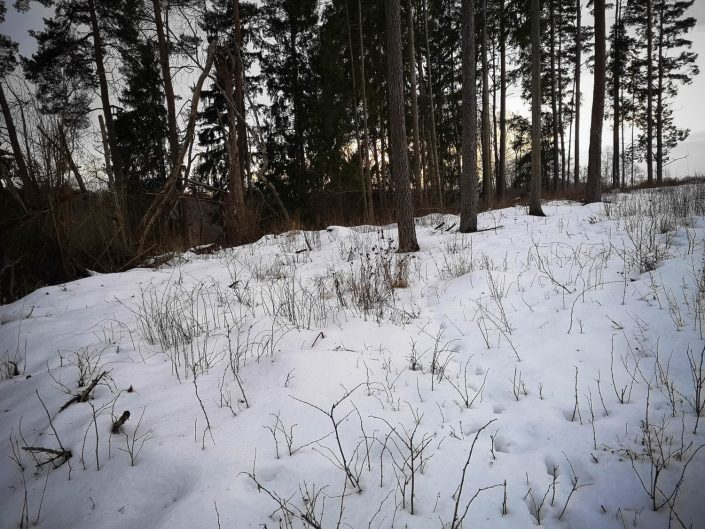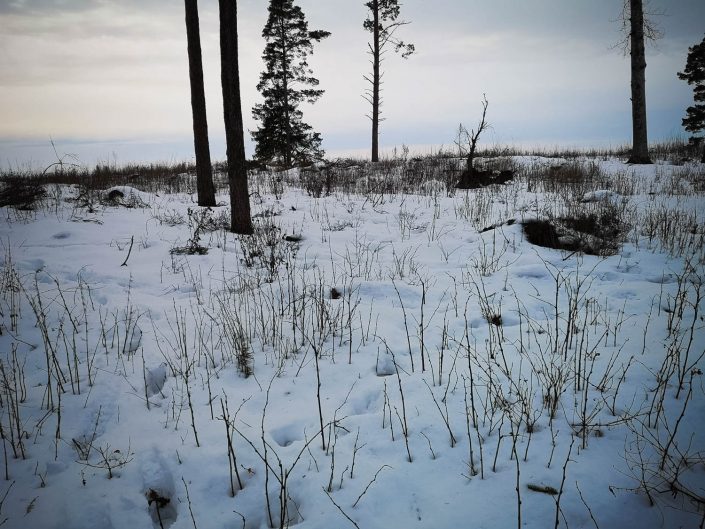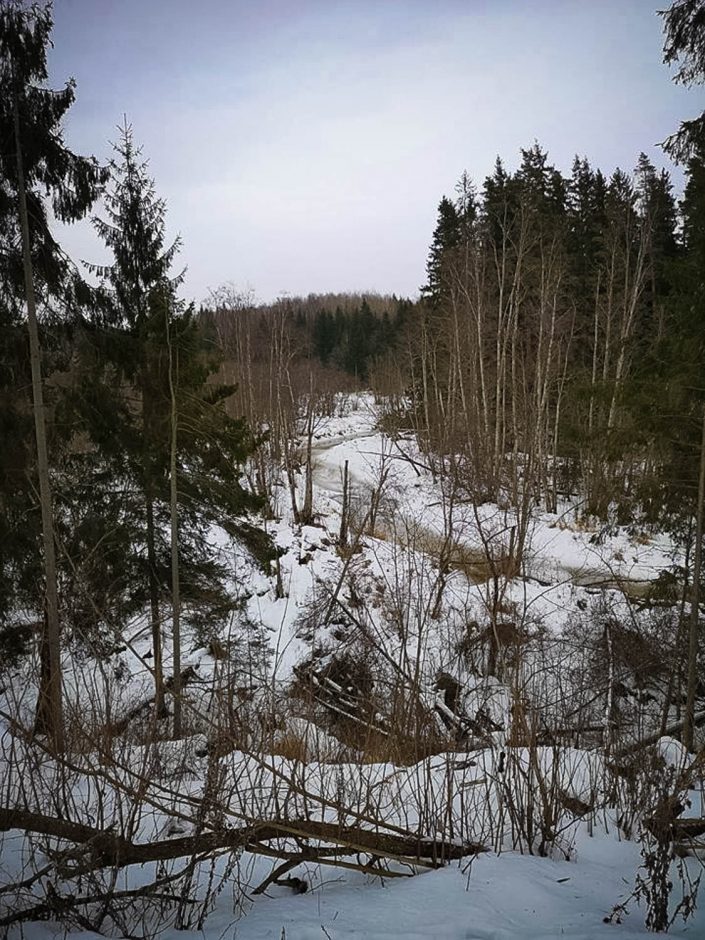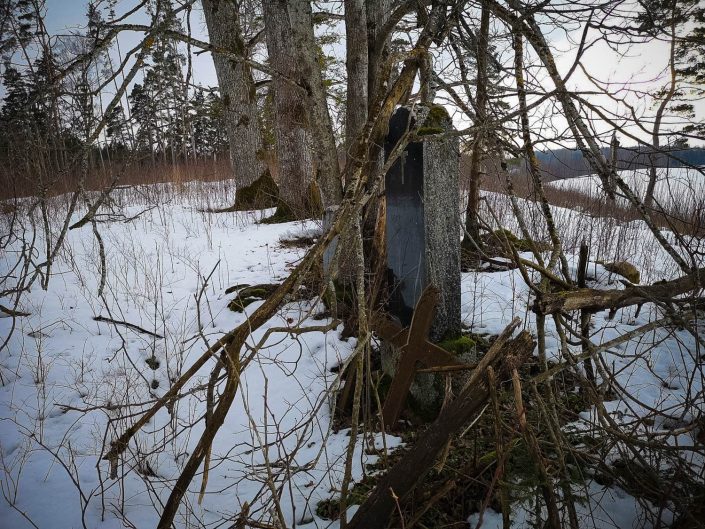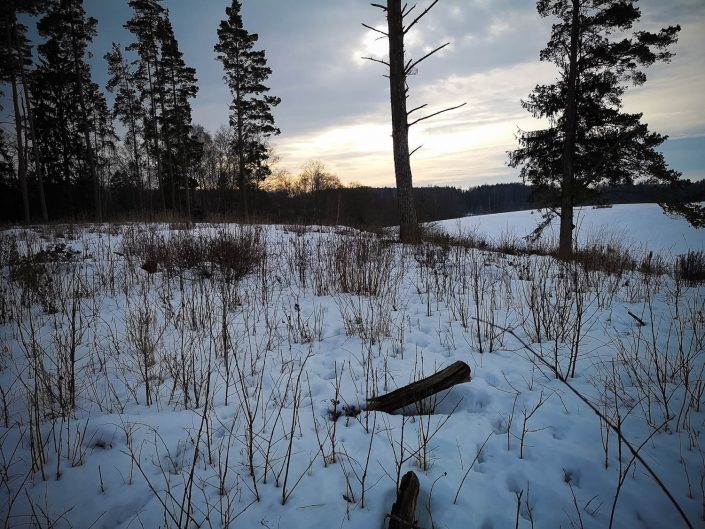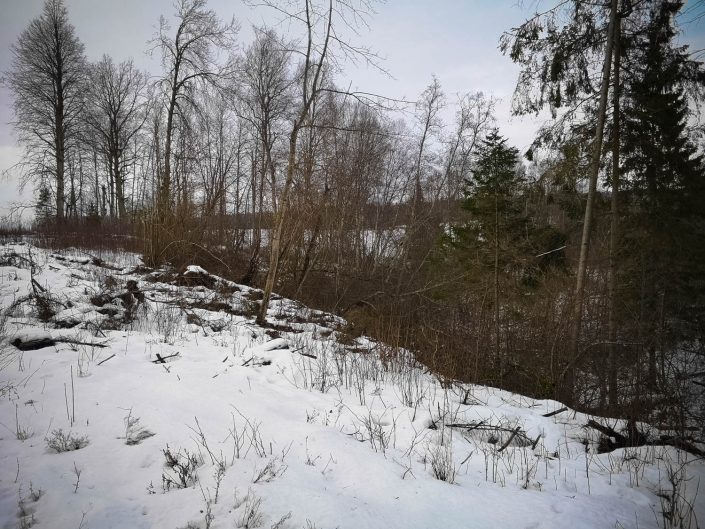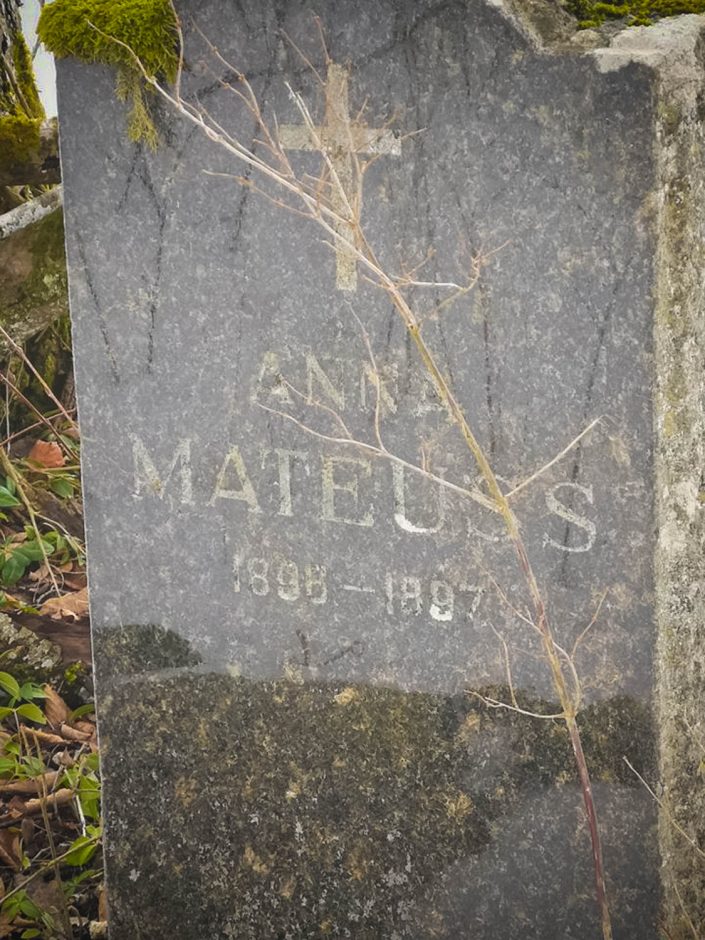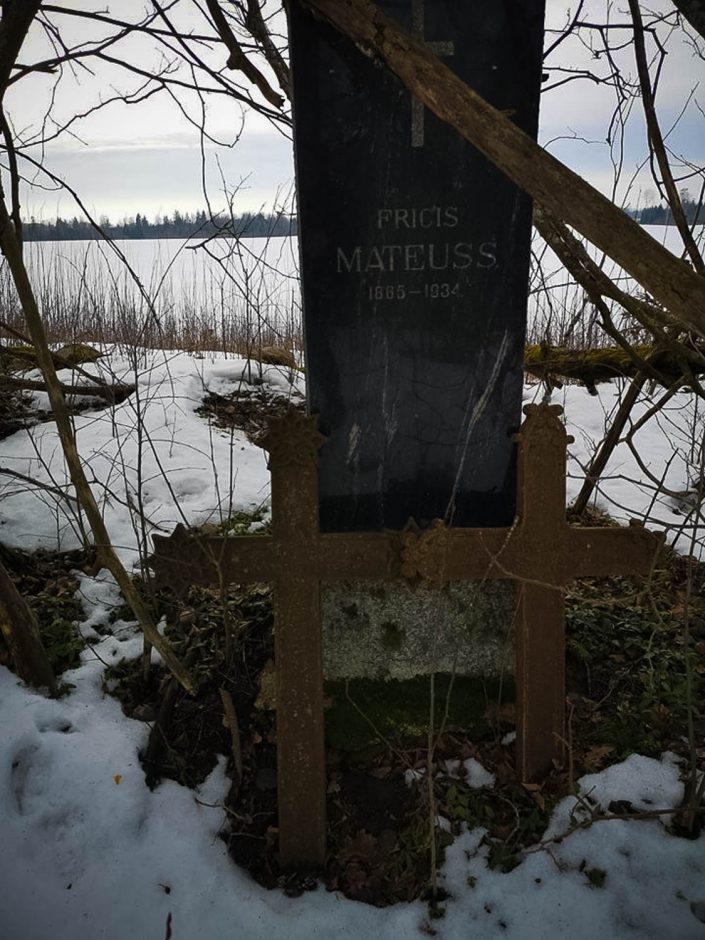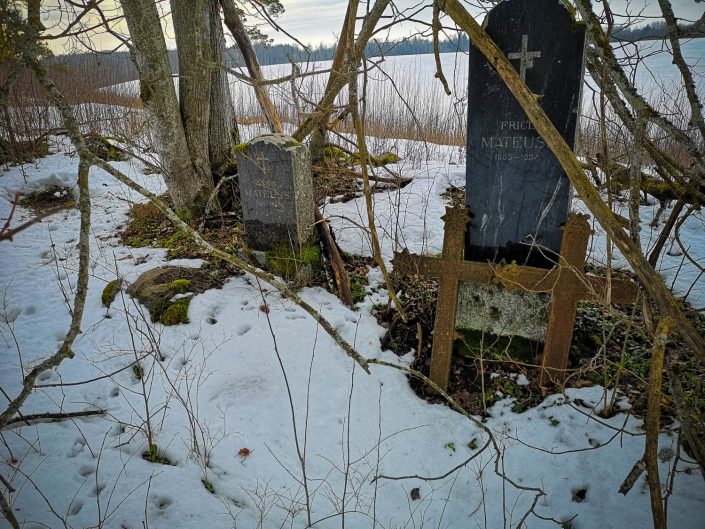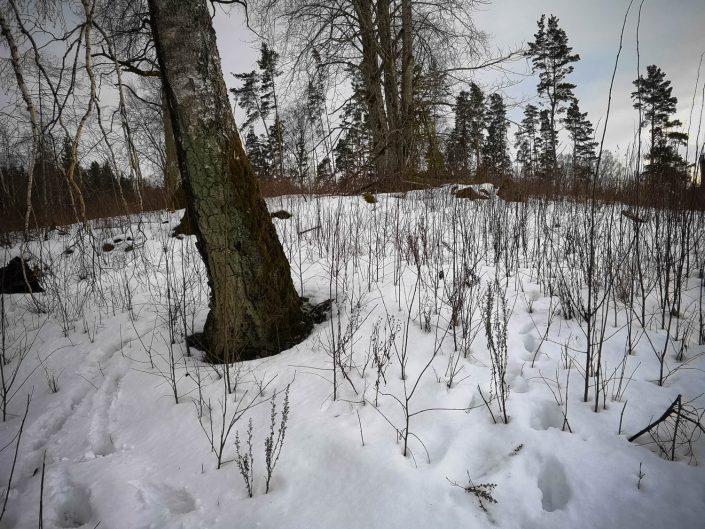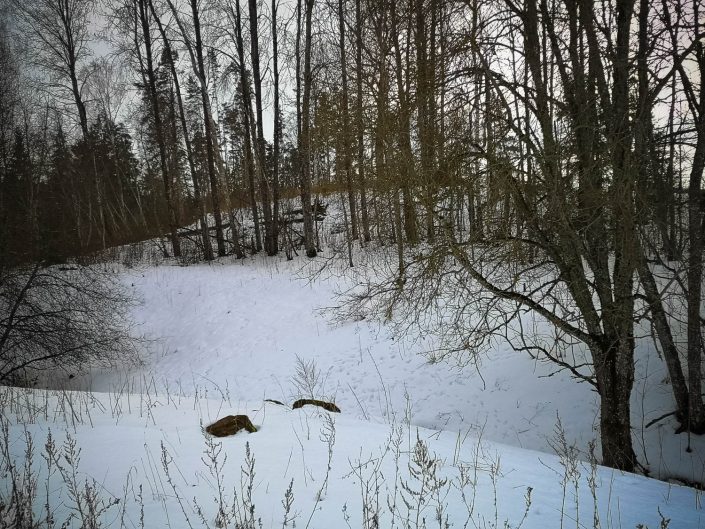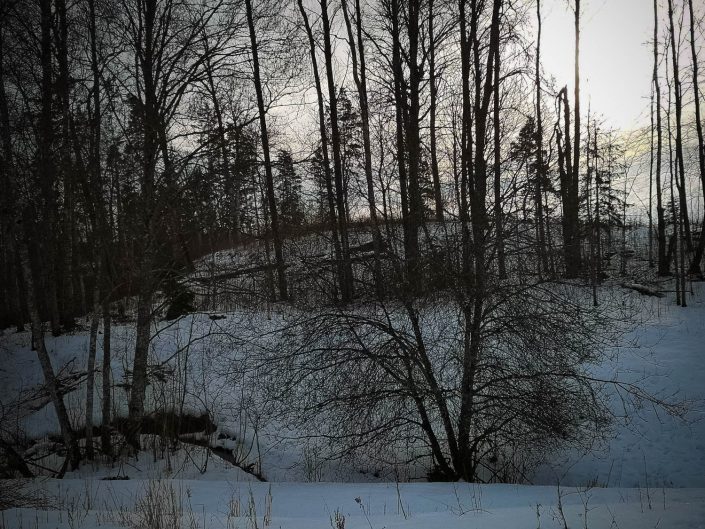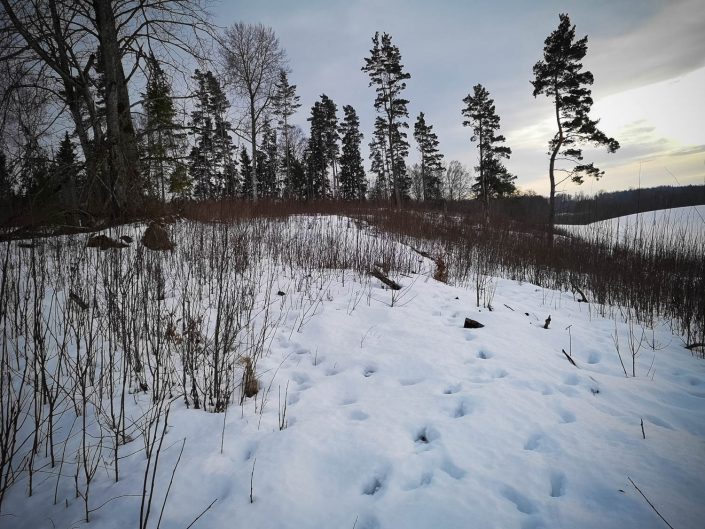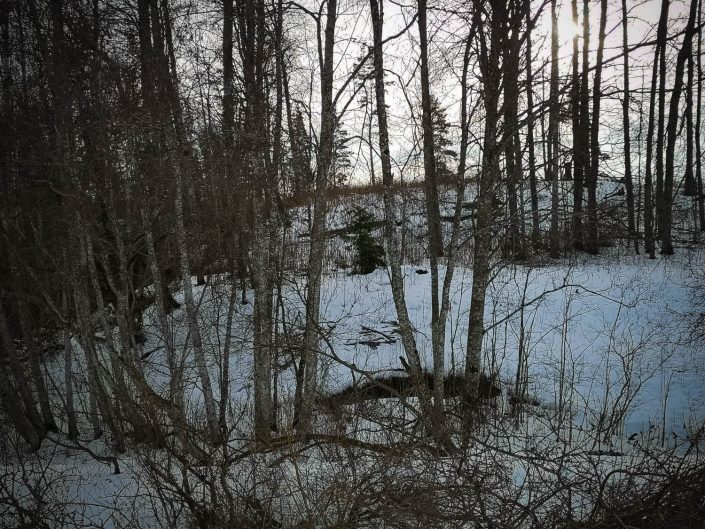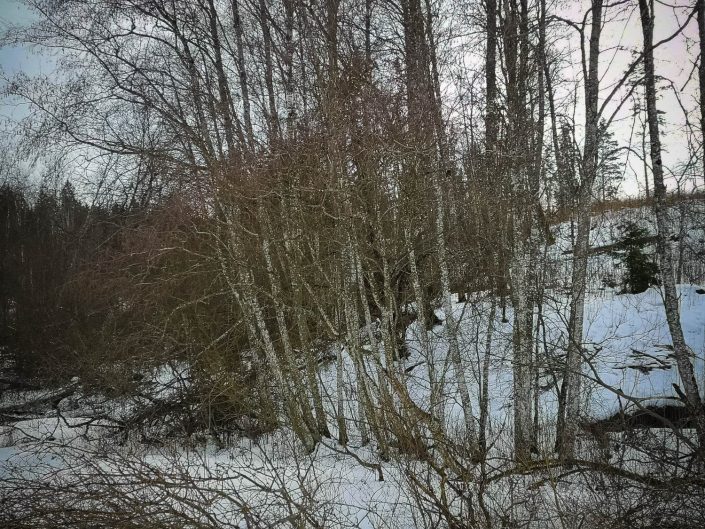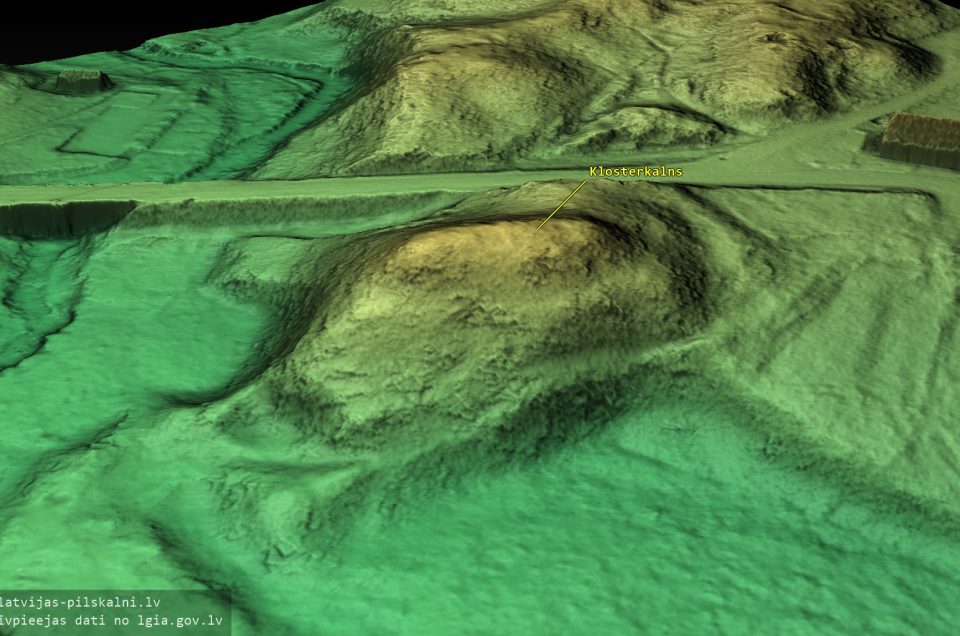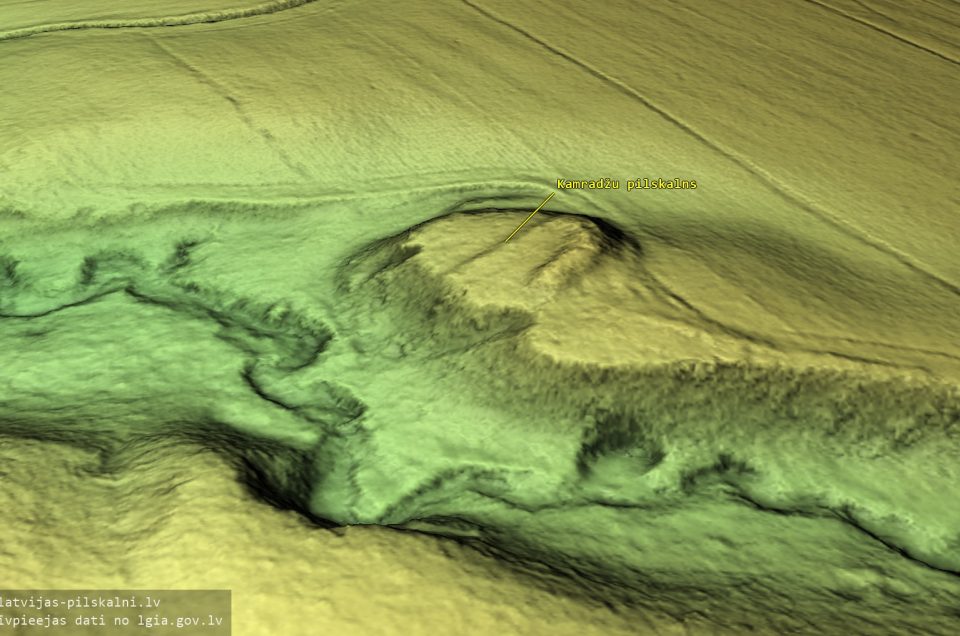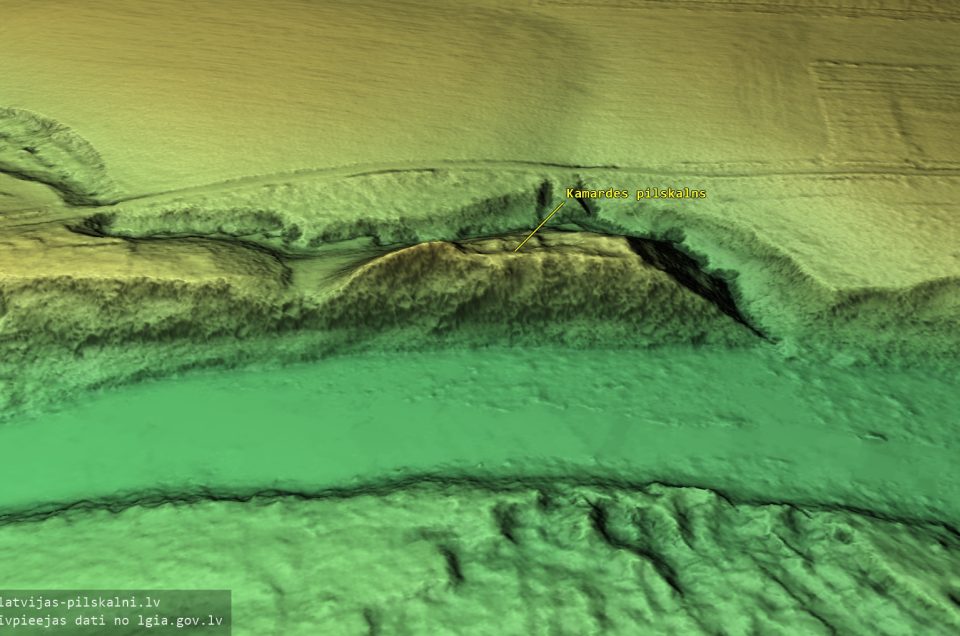
Survey scale 1:1000. Contour interval 1 m. Surveyed on August 9, 1923. Illustration from E. Brastiņš’ book.
In Kuldīga county, Ciecere municipality, 3 km south-east of the Lielciecere manor, on the grounds of the Pilskalni homestead there is a place known as “Hillfort”. The hilltop is 110 m long and at the southern end 50 m wide.
To the east and the south, the Ciecere river skirts the hill, forming an 11 m high embankment. These are the steepest and most complete sides of the hillfort. To the north and the west, the slopes have been ploughed so much that their initial look and steepness cannot be determined. The hill has been ploughed from time immemorial. Now it lays fallow and is overgrown with a small coniferous forest. The homestead’s graveyard lies at the northern end of the hilltop.

Area plan. Scale 1: 100.000. Illustration from E. Brastiņš’ book.
The hillfort currently has no visible ditches or earthworks. Its original size cannot be determined either. The soil consists of tough clay with a little charcoal. No other cultural layer can be found. Supposedly, the hillfort was constructed at later times and was in use for a brief period.
The property owner of Pilskalni, Mateuss, tells several legends about the hillfort. His father’s father as a boy was herding pigs on the side of the hill and found a heavy brick. He heated the brick red hot and threw it into the river. The brick boiled for a long time and sunk. As an adult, he claimed the brick was made of gold and went looking for it.

Ciecere hillfort from the east. Illustration from E. Brastiņš’ book.
The hillfort used to have a hole. If one put a duck into it, the duck came out in the river.
One morning a lad was rounding up horses. An open chest with money stood on the river bank. The lad filled his pockets and ran. The chest slammed shut and slipped into the river. In the forest, a black goat crashed into the lad. The goat whacked him until he lost all the money, lest one copper stuck between his fingers. The lad returned home terrified, with torn clothes, and wet.
Bielenstein retells these legends in other words in his 1866 description of the hillfort (Mag. XIV). He also mentions the following stories. In the old times, wizards cursed a castle here; the castle sunk. Several pits are seen near the western edge of the hilltop. Three brothers once dug for treasure there. They found nothing, but one of them became blind, the other deaf, and the third mute.
- Brastiņš, E. Latvijas pilskalni. Vol. 2, Zemgale un Augšzeme. Riga, 1926.
